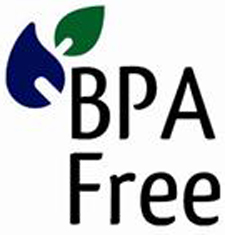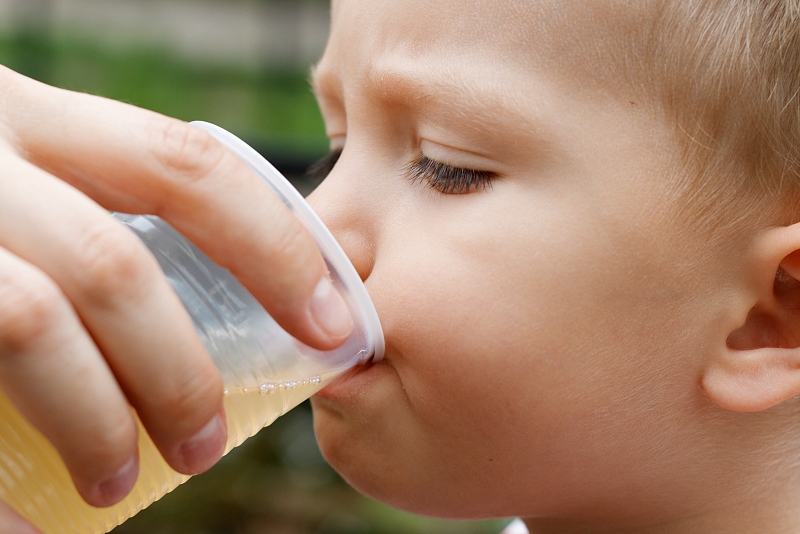The Hormone Destroyer
Bisphenol A is an organic compound which enters our system from the plastic beverages we use and imposes serious health risks.
Bisphenol A is mainly contained in polycarbonates which are used for the production of plastic household products, milk bottles for infants, lunchboxes etc. It is preferred by manufacturers due to
its elasticity and strengthening effect on the plastic. The organic compound is also an ingredient of the acid resins which cover cans and metal caps of jars. That would not have been an issue if
the compound did not remain in the plastic, poisoning our food. However, compared to the first types of plastic produced, which were much more stable and insoluble, the new ones are not sustainable
enough due to their various ingredients. Bisphenol A is listed amongst those exactly.
THE RUNAWAY
It starts dissolving under high temperature or friction and the process becomes more intense over time. This is why the quality of the plastic beverages used permanently in households decreases with the usage of hot water or sunlight which raises serious health concerns. Moreover, Bisphenol A has an effect on hormonal activity in the human body and is also grouped with other xenostrogens, also known as hormonal disruptors. They are summarized in a scientific report by one of the most prominent experts in the field of obstetrics and gynecology in Bulgaria – Prof. Milko Sirakov from the specialized hospital "Maichin Dom". These hormonal disruptors mimic the male or female hormones, by binding with the particular hormone receptor which ceases the normal function of the natural human hormones. Prof. Sirakov further argues that others empower particular genes through cell proteins which can lead to DNA disruptions or even tumor developments.
BISHENOL A STRIKES AGAIN
A vast number of research results and experiments report sicknesses caused by big amounts of Bisphenol A in the human system. In 1993 David Feldman, a professor at the medical faculty of Stanford University, did a thorough research on polycarbonate bottles used for mineral water showing that they contained the harmful chemical. It turned out that only two to five out of a billion parts of Bisphenol A are enough to stimulate the activity of cancer cells!
Further research conducted at the Dartmouth University reveals that when plastic folie gets warm in a microwave together with plant oil, it produces 500 000 times more xenostrogen than the dose which influences the activity of the mammary gland. Meanwhile, when it comes to men the excessive amounts of Bisphenol A can lead to ginekomastia – a development of mammary glands. Scientists all share the same opinion - this creates a hormonal chaos in the human body.
Furthermore, the effect of the interaction of this compound (Bisphenol A) is visible after a few years when it is too late for a reaction and the damage is passed to the next generation. An experiment was carried out at Harvard University involving 244 pregnant women with high levels of Bisphenol A in their blood.
Their babies were tested before and after birth and their development was closely observed until they turned three. The toddlers with higher levels of the compound had
problems with their behavior. They were more aggressive, some even suffered from depression.
ON THE EDGE OF THE RAZOR BLADE
0, 05 kg/mg is the acceptable daily amount of Bisphenol A estimated by the European Food Safety Authority (EFSA). Since last year heavier restrictions have been imposed in the EU. 0.6 mg/kg of Bisphenol A is allowed to be used in plastic without infecting the food. It is also prohibited to be used in the production of bottles for babies.
In fact, France and Canada have stopped the production and import of materials which contain the harmful organic compound.
ARE WE UNDER THREAT?!
'There is a lack of special warnings on food packages' says Bogomil Nikolov, executive director of the association "Active Consumers".
'However, on every package there should be a description of the plastic used for manufacturing, usually at the back or at the bottom there is a label with a code – the digits can vary from 1 to 7, the risky ones are 3 and 7', says Nikolov.

For the time being the entire responsibility falls on the regulative bodies such as the Bulgarian Food Safety Agency which follows strictly the EU norms for use of the Bisphenol A and its usage in milk bottles for infants is prohibited. But there are several easy ways you can do it yourself.
Find out how in issue 1/2013 yr. of Magazine Ossem!
THE RUNAWAY
It starts dissolving under high temperature or friction and the process becomes more intense over time. This is why the quality of the plastic beverages used permanently in households decreases with the usage of hot water or sunlight which raises serious health concerns. Moreover, Bisphenol A has an effect on hormonal activity in the human body and is also grouped with other xenostrogens, also known as hormonal disruptors. They are summarized in a scientific report by one of the most prominent experts in the field of obstetrics and gynecology in Bulgaria – Prof. Milko Sirakov from the specialized hospital "Maichin Dom". These hormonal disruptors mimic the male or female hormones, by binding with the particular hormone receptor which ceases the normal function of the natural human hormones. Prof. Sirakov further argues that others empower particular genes through cell proteins which can lead to DNA disruptions or even tumor developments.
BISHENOL A STRIKES AGAIN
A vast number of research results and experiments report sicknesses caused by big amounts of Bisphenol A in the human system. In 1993 David Feldman, a professor at the medical faculty of Stanford University, did a thorough research on polycarbonate bottles used for mineral water showing that they contained the harmful chemical. It turned out that only two to five out of a billion parts of Bisphenol A are enough to stimulate the activity of cancer cells!
Further research conducted at the Dartmouth University reveals that when plastic folie gets warm in a microwave together with plant oil, it produces 500 000 times more xenostrogen than the dose which influences the activity of the mammary gland. Meanwhile, when it comes to men the excessive amounts of Bisphenol A can lead to ginekomastia – a development of mammary glands. Scientists all share the same opinion - this creates a hormonal chaos in the human body.
Furthermore, the effect of the interaction of this compound (Bisphenol A) is visible after a few years when it is too late for a reaction and the damage is passed to the next generation. An experiment was carried out at Harvard University involving 244 pregnant women with high levels of Bisphenol A in their blood.
Their babies were tested before and after birth and their development was closely observed until they turned three. The toddlers with higher levels of the compound had
problems with their behavior. They were more aggressive, some even suffered from depression.
ON THE EDGE OF THE RAZOR BLADE
0, 05 kg/mg is the acceptable daily amount of Bisphenol A estimated by the European Food Safety Authority (EFSA). Since last year heavier restrictions have been imposed in the EU. 0.6 mg/kg of Bisphenol A is allowed to be used in plastic without infecting the food. It is also prohibited to be used in the production of bottles for babies.
In fact, France and Canada have stopped the production and import of materials which contain the harmful organic compound.
ARE WE UNDER THREAT?!
'There is a lack of special warnings on food packages' says Bogomil Nikolov, executive director of the association "Active Consumers".
'However, on every package there should be a description of the plastic used for manufacturing, usually at the back or at the bottom there is a label with a code – the digits can vary from 1 to 7, the risky ones are 3 and 7', says Nikolov.

For the time being the entire responsibility falls on the regulative bodies such as the Bulgarian Food Safety Agency which follows strictly the EU norms for use of the Bisphenol A and its usage in milk bottles for infants is prohibited. But there are several easy ways you can do it yourself.
Find out how in issue 1/2013 yr. of Magazine Ossem!



